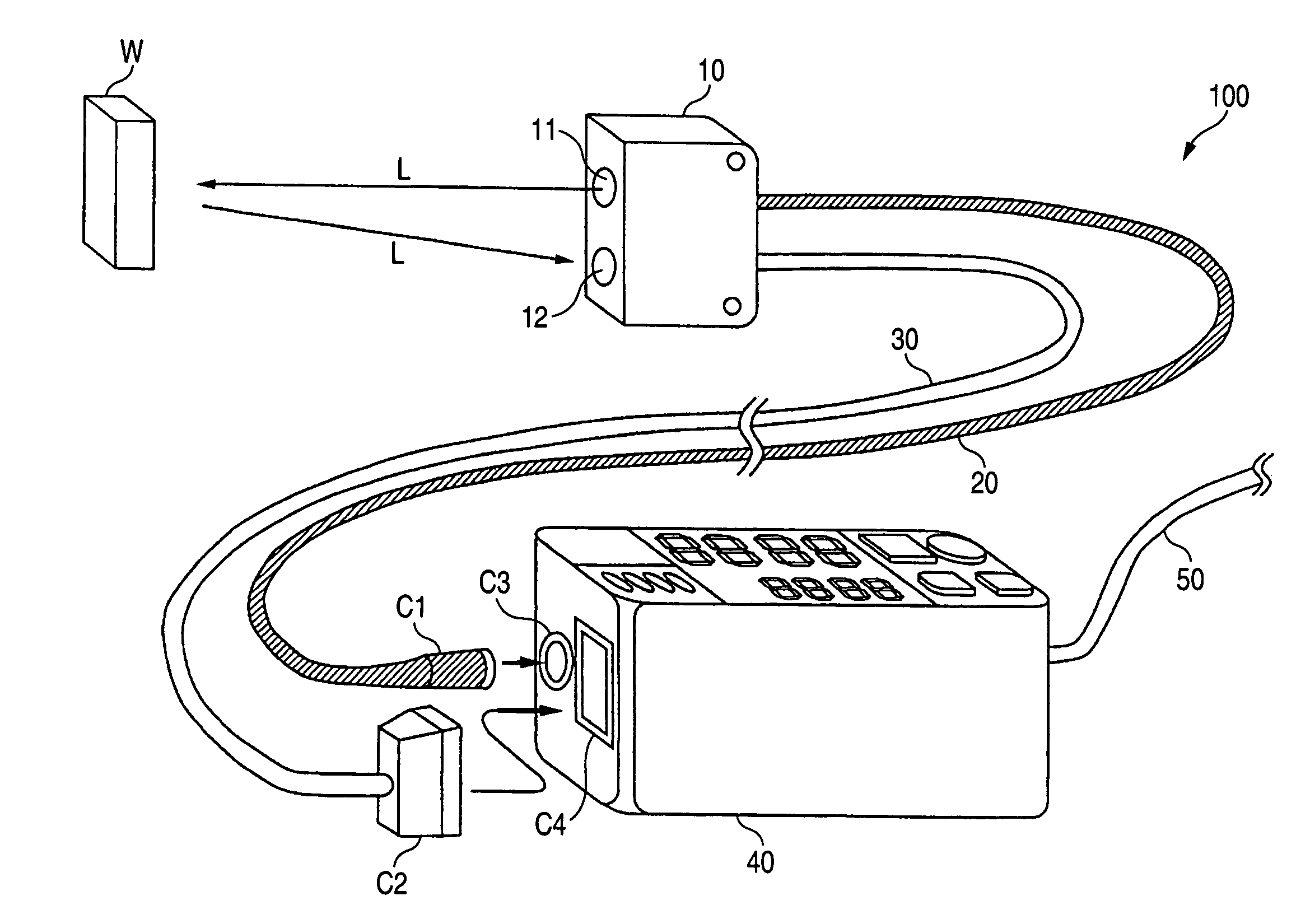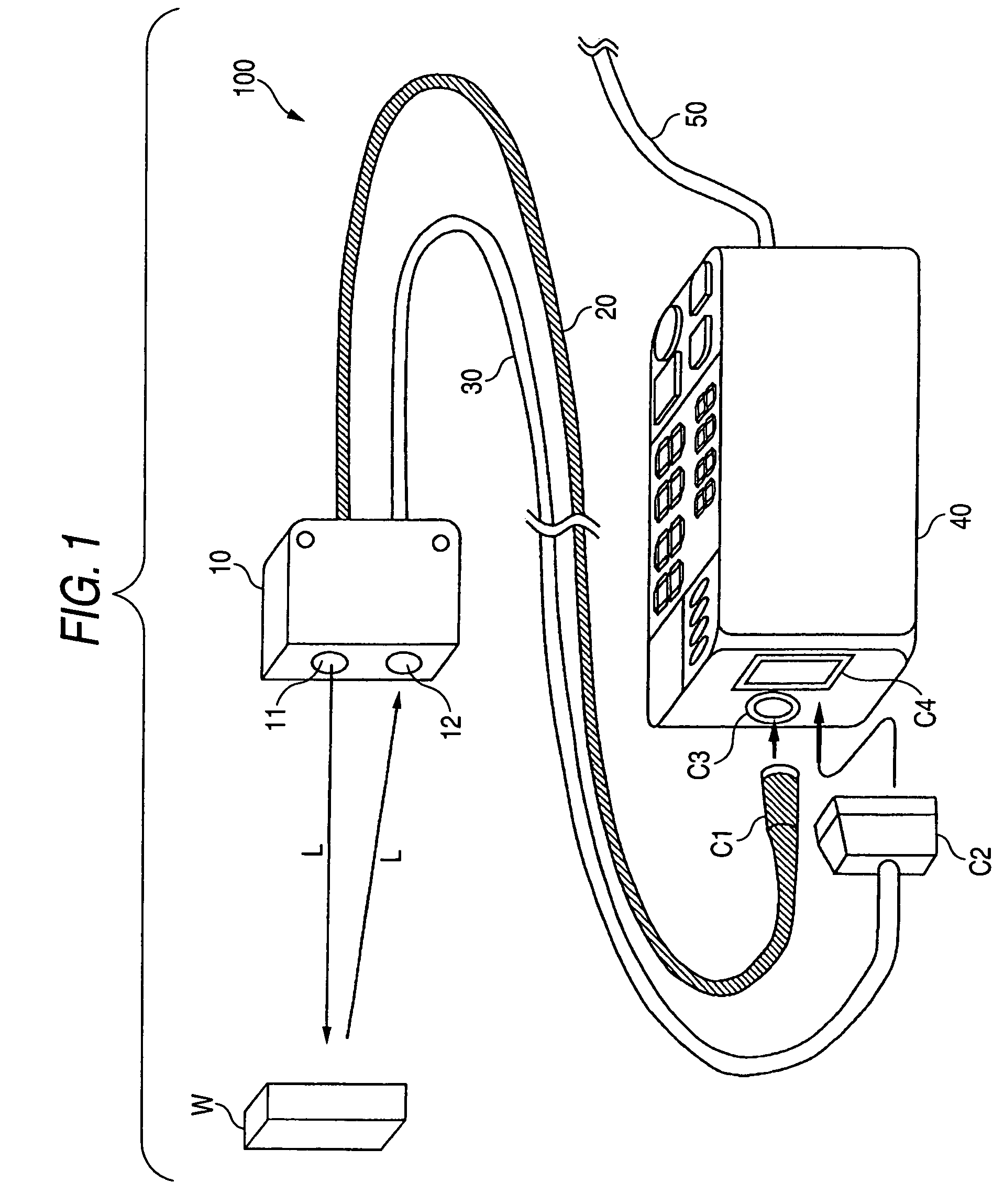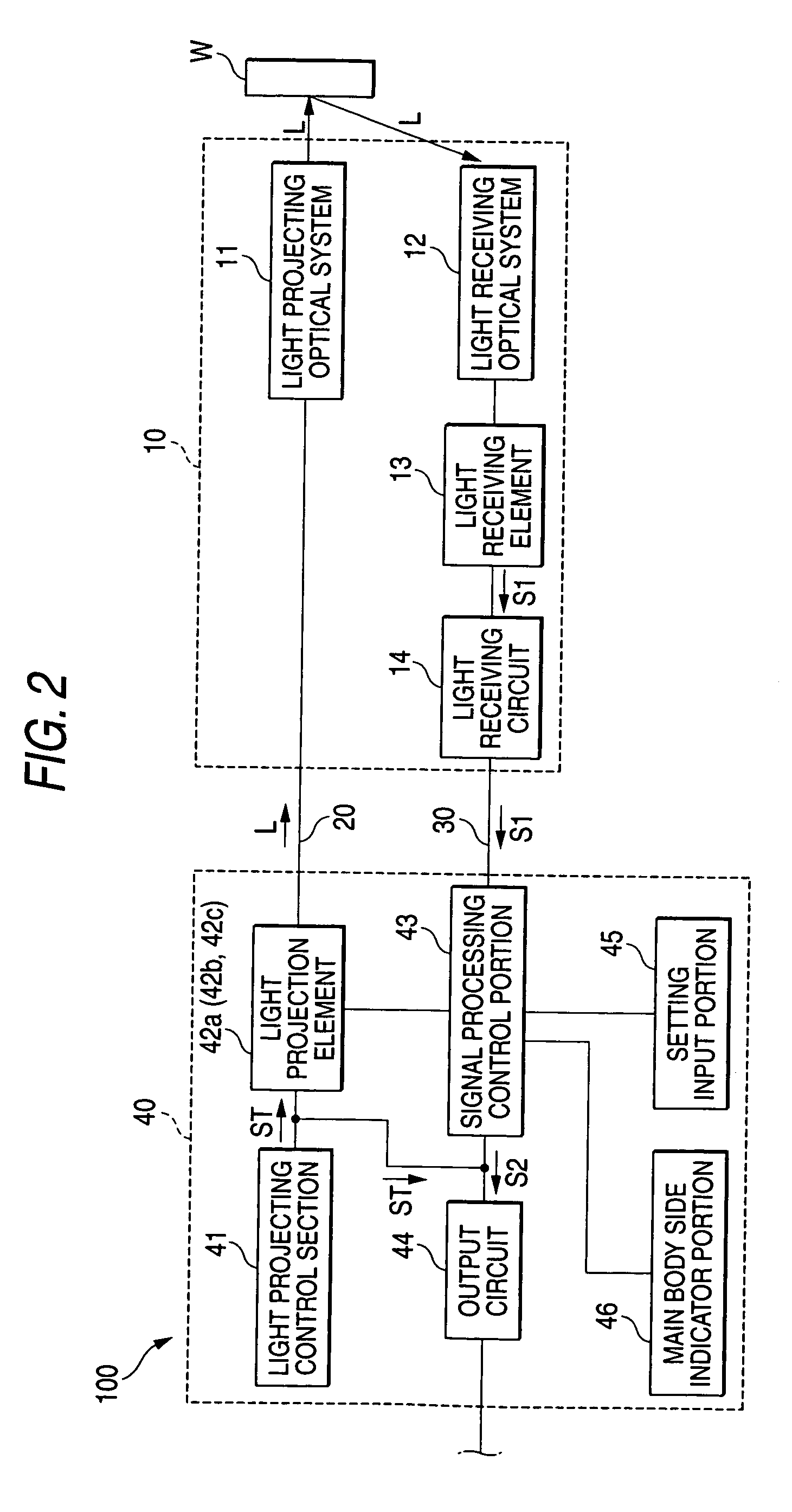Photoelectric sensor
a technology of photoelectric sensor and sensor, applied in the field of photoelectric sensor, can solve the problems of low light utilization efficiency, s/n (signal-to-noise ratio), increased noise, etc., and achieve the effect of preventing detection errors, suppressing light, and improving the quantity of received ligh
- Summary
- Abstract
- Description
- Claims
- Application Information
AI Technical Summary
Benefits of technology
Problems solved by technology
Method used
Image
Examples
first embodiment
(First Embodiment)
[0081]FIG. 1 is a perspective view showing the external appearance of a photoelectric sensor according to a first embodiment of the invention. The photoelectric sensor according to the first embodiment is a color discrimination sensor for discriminating the color of an object.
[0082]The photoelectric sensor 100 according to the first embodiment includes a sensor head portion 10, an optical fiber cable 20, an electric wire cable 30, a main body portion 40, and an output cable 50.
[0083]As shown in FIG. 1, a connector C1 of the optical fiber cable 20 extending from the sensor head portion 10 is connected to a connector C3 of the main body portion 40. A connector C2 of the electric wire cable 30 extending from the sensor head portion 10 is connected to a connector C4 of the main body portion 40. The output cable 50 extending from the main body portion 40 is connected to an external apparatus not shown.
[0084]A light-projecting optical system 11 and a light-receiving opti...
second embodiment
(Second Embodiment)
[0139]A photoelectric sensor according to a second embodiment of the invention has the same configuration and operation as those of the photoelectric sensor 100 according to the first embodiment except the following points.
[0140]FIG. 10 is a block diagram showing the internal configuration of the photoelectric sensor according to the second embodiment.
[0141]The photoelectric sensor 200 according to the second embodiment includes an indicator circuit 15, and at least one indicator lamp 16 in addition to the configuration of the photoelectric sensor 100 according to the first embodiment. The indicator circuit 15 and the indicator lamp 16 are provided in the inside of the sensor head portion 10.
[0142]As shown in FIG. 10, the indicator circuit 15 of the sensor head portion 10 is connected to the signal processing control portion 43 of the main body portion 40 by the electric wire cable 30.
[0143]The signal processing control portion 43 of the main body portion 40 trans...
experimental examples
[0254]The present inventor conducted the following experiment to examine the influence of presence of the first and second polarizing plates 111 and 121 (hereafter collectively referred to as “polarizing plates”) and inclination of the object W on the quantity of light incident on the light-receiving element 13 (hereinafter referred to as “total incident light quantity”) and the detected color value. Incidentally, the experiment was conducted on two objects W. One of the objects W is assumed to be an object J1 while the other is assumed to be an object J2. A surface of the object J2 is rougher than a surface of the object J1.
[0255]First, the inventor disposed the object J1 as shown in FIG. 23. The total-incident light quantity and the detected color value were measured, in accordance with the inclination α of the object J1 with reference to a surface WH perpendicular to light L projected from the light-projecting optical system 11, by a photoelectric sensor 100 provided with polariz...
PUM
 Login to View More
Login to View More Abstract
Description
Claims
Application Information
 Login to View More
Login to View More - R&D
- Intellectual Property
- Life Sciences
- Materials
- Tech Scout
- Unparalleled Data Quality
- Higher Quality Content
- 60% Fewer Hallucinations
Browse by: Latest US Patents, China's latest patents, Technical Efficacy Thesaurus, Application Domain, Technology Topic, Popular Technical Reports.
© 2025 PatSnap. All rights reserved.Legal|Privacy policy|Modern Slavery Act Transparency Statement|Sitemap|About US| Contact US: help@patsnap.com



